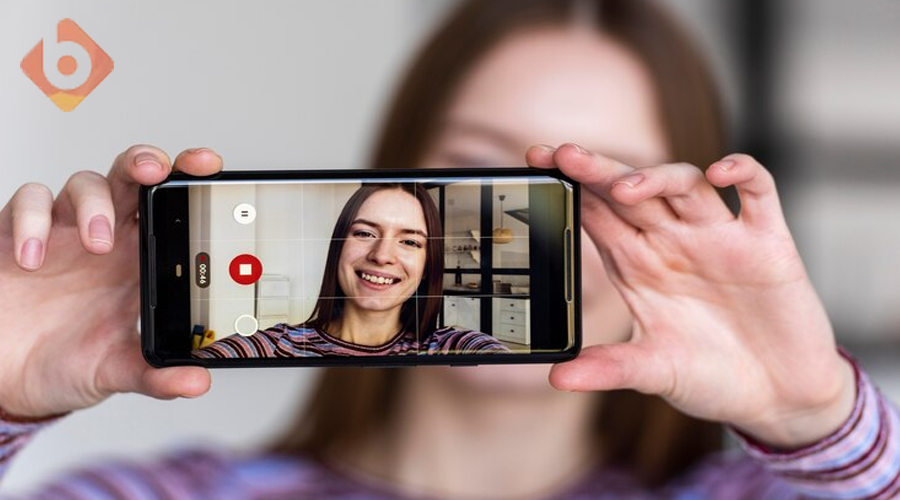Marketing is a dynamic and evolving field that requires constant adaptation and innovation. As we enter 2023, there are some trends that marketers should be aware of and leverage to stay ahead of the competition and connect with their customers. Here are five notable marketing trends that you should know:
1. Increasing Video and Livestreaming Usage
Video is one of the most engaging and effective forms of content marketing, as it can capture attention, convey emotion, and deliver information in a concise and compelling way. According to a report by Wyzowl, 86% of businesses used video as a marketing tool in 2022, and 93% of marketers said that video was an important part of their marketing strategy.
Livestreaming is a subset of video marketing that allows brands to interact with their audiences in real-time, creating a sense of urgency, authenticity, and community. Livestreaming can be used for various purposes, such as product launches, Q&A sessions, behind-the-scenes tours, tutorials, interviews, and more. Livestreaming can also boost conversions, as viewers can directly purchase products or services that are featured or recommended during the stream.

In 2023, video and livestreaming usage will continue to increase, as more platforms and tools become available and accessible for marketers and consumers alike. For example, Instagram recently launched Live Rooms, which allows up to four people to go live together on the app. TikTok also introduced TikTok LIVE, which enables creators to livestream with their fans and accept virtual gifts. YouTube, Facebook, Twitter, LinkedIn, and other platforms also offer livestreaming features that marketers can leverage to reach their target audiences. SEO Audit Checklist: Assessing and Improving Your Website's Performance
To succeed in video and livestreaming marketing in 2023, marketers should:
- Plan ahead and set clear goals and objectives for each video or livestream
- Choose the right platform and format for their content and audience
- Optimize their video or livestream for SEO and discoverability
- Keep their content short, engaging, and relevant
- Encourage interaction and feedback from their viewers
- Measure and analyze their performance and results
2. Return to In-Person Events
The COVID-19 pandemic has disrupted the events industry and forced many marketers to shift to virtual events in 2020 and 2021. However, as the situation improves and restrictions ease, there is a growing demand and appetite for in-person events in 2023. According to a survey by Bizzabo, 97% of event marketers believe that hybrid events (a combination of virtual and in-person elements) will become more prominent in the future.
In-person events offer many benefits for marketers, such as:
- Building trust and rapport with customers and prospects
- Generating leads and sales opportunities
- Showcasing products or services in a tangible way
- Creating memorable experiences and brand awareness
- Networking and collaborating with other industry players
In 2023, marketers should consider hosting or attending in-person events that are relevant to their niche and goals. However, they should also be mindful of the health and safety protocols and expectations of their attendees. Moreover, they should leverage technology to enhance their in-person events and create hybrid experiences that can reach wider and more diverse audiences.
To succeed in in-person events marketing in 2023, marketers should:
- Research and understand their target audience’s preferences and needs
- Choose the right venue, date, time, and format for their event
- Promote their event through various channels and platforms
- Provide value-added content and activities for their attendees
- Follow up with their attendees after the event
- Collect feedback and data to improve their future events

3. Podcasting
Podcasting is another form of content marketing that has gained popularity and traction in recent years. Podcasts are audio shows that can be downloaded or streamed online on various devices and platforms. Podcasts can cover a wide range of topics, such as business, education, entertainment, health, news, sports, etc.
According to Edison Research, there were an estimated 116 million monthly podcast listeners in the US in 2021. Podcasts offer many advantages for marketers, such as:
- Establishing authority and credibility in their field
- Educating and informing their audience about their products or services
- Building loyalty and trust with their listeners
- Reaching new markets and segments
- Generating revenue through sponsorships or subscriptions
In 2023, podcasting will continue to grow as more people consume audio content on the go or at home. Additionally, more platforms will emerge or expand to support podcast creation and distribution. For example, Spotify recently acquired Anchor, a podcast creation and hosting platform, and launched Spotify Greenroom, a live audio app that allows users to create or join live conversations. Apple also introduced Apple Podcasts Subscriptions, which allows podcasters to offer premium content and benefits to their subscribers.
To succeed in podcasting marketing in 2023, marketers should:
- Define their niche and target audience
- Choose a catchy name and logo for their podcast
- Produce high-quality and consistent content
- Promote their podcast through various channels and platforms
- Engage with their listeners and solicit feedback
- Collaborate with other podcasters or influencers
4. Interactive Marketing
Interactive marketing is a type of marketing that involves creating engaging and immersive experiences for customers that elicit feedback, participation, or action. Interactive marketing can take various forms, such as quizzes, polls, surveys, games, contests, calculators, chatbots, augmented reality (AR), virtual reality (VR), etc.
Interactive marketing offers many benefits for marketers, such as:
- Capturing attention and interest of customers
- Collecting data and insights about customer preferences and behavior
- Increasing customer satisfaction and retention
- Boosting conversions and sales
- Differentiating from competitors and creating a competitive edge
In 2023, interactive marketing will become more prevalent and sophisticated as customers demand more personalized and relevant experiences from brands. Moreover, technology will enable more creative and innovative ways of creating interactive marketing campaigns. For example, Snapchat recently launched Scan, a feature that allows users to scan objects or scenes with their camera and access relevant AR experiences. IKEA also offers an app that allows users to place virtual furniture in their homes using AR.
To succeed in interactive marketing in 2023, marketers should:
- Identify their goals and objectives for each interactive marketing campaign
- Choose the right type and format of interactive content for their audience and purpose
- Design their interactive content to be user-friendly, intuitive, and fun
- Test and optimize their interactive content for performance and usability
- Analyze and utilize the data and feedback collected from their interactive content

5. Omnichannel Marketing: Integrated Online-Offline Customer Experience
Omnichannel marketing is a type of marketing that aims to provide a seamless and consistent customer experience across multiple channels and touchpoints. Omnichannel marketing goes beyond multichannel marketing, which simply uses multiple channels to reach customers. Omnichannel marketing integrates online and offline channels to create a holistic and unified customer journey.
Omnichannel marketing offers many benefits for marketers, such as:
- Increasing customer loyalty and retention
- Improving customer satisfaction and advocacy
- Enhancing brand awareness and recognition
- Driving more traffic and conversions
- Optimizing marketing resources and budget
In 2023, omnichannel marketing will become more essential and expected as customers use multiple devices and platforms to interact with brands. Additionally, more technologies will emerge or improve to facilitate omnichannel marketing. For example, Google recently launched Google Business Messages, which allows businesses to connect with customers through Google Maps or Search. Starbucks also offers a mobile app that allows customers to order, pay, earn rewards, and access personalized offers.
To succeed in omnichannel marketing in 2023, marketers should:
- Map out their customer journey across different channels and touchpoints
- Identify the pain points and opportunities for improvement in their customer journey
- Align their messaging and branding across all channels
- Use data and analytics to track and measure their omnichannel performance
- Test and optimize their omnichannel strategy based on customer feedback
- 05 Effective Marketing Strategies to Increase Business Sales
Conclusion
Marketing is a fast-paced and ever-changing field that requires constant adaptation and innovation. By staying on top of the latest trends and best practices, marketers can create effective and engaging campaigns that resonate with their customers. The five notable marketing trends discussed in this essay are:
- Increasing video and livestreaming usage
- Return to in-person events
- Podcasting
- Interactive marketing
- Omnichannel marketing: integrated online-offline customer experience
By leveraging these trends in 2023, marketers can gain a competitive edge in their niche and achieve their marketing goals.
